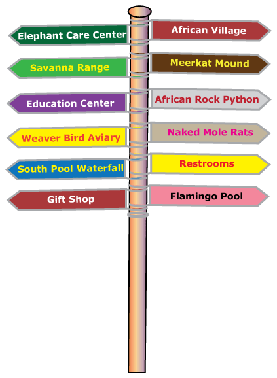OTHER ANIMALS AT ELEPHANT CROSSING
African Weaver Birds
 The Ploceidae, or weavers, are small passerine birds related to the finches.
These are seed-eating birds with rounded conical bills, most of which breed in sub-Saharan Africa, with fewer species in tropical Asia and also in Australia. The weaver group is divided into the buffalo, sparrow, typical, and widow weavers. The males of many species are brightly coloured, usually in red or yellow and black, some species show variation in colour only in the breeding season.
The Ploceidae, or weavers, are small passerine birds related to the finches.
These are seed-eating birds with rounded conical bills, most of which breed in sub-Saharan Africa, with fewer species in tropical Asia and also in Australia. The weaver group is divided into the buffalo, sparrow, typical, and widow weavers. The males of many species are brightly coloured, usually in red or yellow and black, some species show variation in colour only in the breeding season.Weaver birds, also known as weaver finches, get their name because of their elaborately woven nests (the most elaborate of any birds'), though some are notable for their selective parasitic nesting habits.
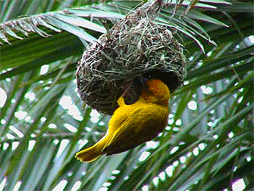 The nests vary in size, shape, material used, and construction techniques from species to species. Materials used for building nests include fine leaf-fibers, grass, and twigs. Many species weave very fine nests using thin strands of leaf fiber, though some, like the buffalo-weavers, form massive untidy stick nests in their colonies, which may have spherical woven nests within. The sparrow weavers of Africa build apartment-house nests, in which 100 to 300 pairs have separate flask-shaped chambers entered by tubes at the bottom. Most species weave nests that have narrow entrances, facing downward.
The nests vary in size, shape, material used, and construction techniques from species to species. Materials used for building nests include fine leaf-fibers, grass, and twigs. Many species weave very fine nests using thin strands of leaf fiber, though some, like the buffalo-weavers, form massive untidy stick nests in their colonies, which may have spherical woven nests within. The sparrow weavers of Africa build apartment-house nests, in which 100 to 300 pairs have separate flask-shaped chambers entered by tubes at the bottom. Most species weave nests that have narrow entrances, facing downward.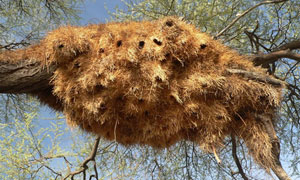
Weavers are gregarious birds which often breed colonially. The birds build their nests together for protection, often several to a branch. Usually the male birds weave the nests and use them as a form of display to lure prospective females. The weaver bird colonies may be found close to water bodies. They sometimes cause crop damage, notably the Red-billed Quelea, reputed to be the world's most numerous bird.
Naked Mole Rats
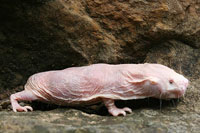 Naked Mole Rats (Heterocephalus glaber) are burrowing rodents. They are found in deserts and grasslands in eastern Africa. They are wrinkly and nearly blind and live their entire lives in total darkness underground. Using their teeth, they dig narrow tunnels and burrows in search of plant roots and tubers to eat.
Naked Mole Rats (Heterocephalus glaber) are burrowing rodents. They are found in deserts and grasslands in eastern Africa. They are wrinkly and nearly blind and live their entire lives in total darkness underground. Using their teeth, they dig narrow tunnels and burrows in search of plant roots and tubers to eat. Clusters averaging 75 to 80 individuals live together in complex systems of burrows in arid African deserts, their tunnel systems stretching up to two or three miles in cumulative length.
African Rock Python
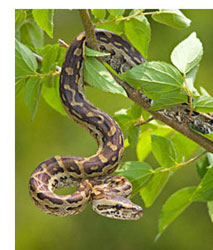 Adult Rock pythons (Python sebae) is one of the world's largest species of snakes. Adults can reach lengths of over 20 feet (six meters). They are found in savannas and other grasslands in sub-Saharan Africa. African rock pythons have heat-sensitive pits in their mouths that help them hunt in the dark. Ambushing prey as large as antelopes, they use their powerful muscles to constrict prey until it cannot breathe then swallow it whole. Rock pythons are currently at risk from humans, who value the snake skin for shoes and purses.
Adult Rock pythons (Python sebae) is one of the world's largest species of snakes. Adults can reach lengths of over 20 feet (six meters). They are found in savannas and other grasslands in sub-Saharan Africa. African rock pythons have heat-sensitive pits in their mouths that help them hunt in the dark. Ambushing prey as large as antelopes, they use their powerful muscles to constrict prey until it cannot breathe then swallow it whole. Rock pythons are currently at risk from humans, who value the snake skin for shoes and purses.



